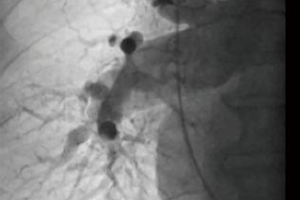Role and management of extracorporeal life support after surgery of chronic thromboembolic pulmonary hypertension
Abstract
Background: Pulmonary endarterectomy (PEA) is a surgical intervention reserved for patients with chronic thromboembolic pulmonary hypertension (CTEPH). In some cases, temporary circulatory support [extracorporeal life support (ECLS)] is required after PEA. Rates of ECLS requirement varies between centers. Reasons for institution of ECLS include respiratory failure, cardiac failure (or both respiratory and cardiac failure), bleeding, and reperfusion edema. This article reviews the experience of ECLS after PEA from the current literature, as well as our own institution’s experience as a CTEPH multidisciplinary center.
Methods: A literature review was conducted along with a retrospective chart review from 15 years of our PEA program.
Results: The literature demonstrates many different approaches are used for mechanically supporting patients who develop complications after PEA. Variations in approach stem from differing indications such as, respiratory failure rather than hemodynamic compromise (or vice versa), time of implantation (immediately in operating room or delayed after surgery) and many other causes. In our center, 12.3% (19/154) of patients need ECLS with extracorporeal membrane oxygenator (ECMO) after PEA procedure. Implantation was mainly in the operating room before or immediately after weaning from cardiopulmonary bypass and mostly peripheral cannulation was used. ECMO lasted an average of 11±8 days. And 52.6% (10 of 19 patients) of patients were weaned from ECLS and of this, 70% (7 of 10 patients) were discharged.
Conclusions: In some cases of PEA, ECLS is needed post-operatively. Expert teams should consider this possibility pre-operatively based on predisposing characteristics. The need for ECMO shouldn’t be “di per se” a contraindication to surgery but might be considered in the surgical risk estimation. The ideal setup is not fixed and depends on the center’s practices as well as indication. Even though complications do occur with ECMO, in general, results are good, being a bridge to further recovery of pulmonary hypertension (PH) or also to transplantation.
Cover






